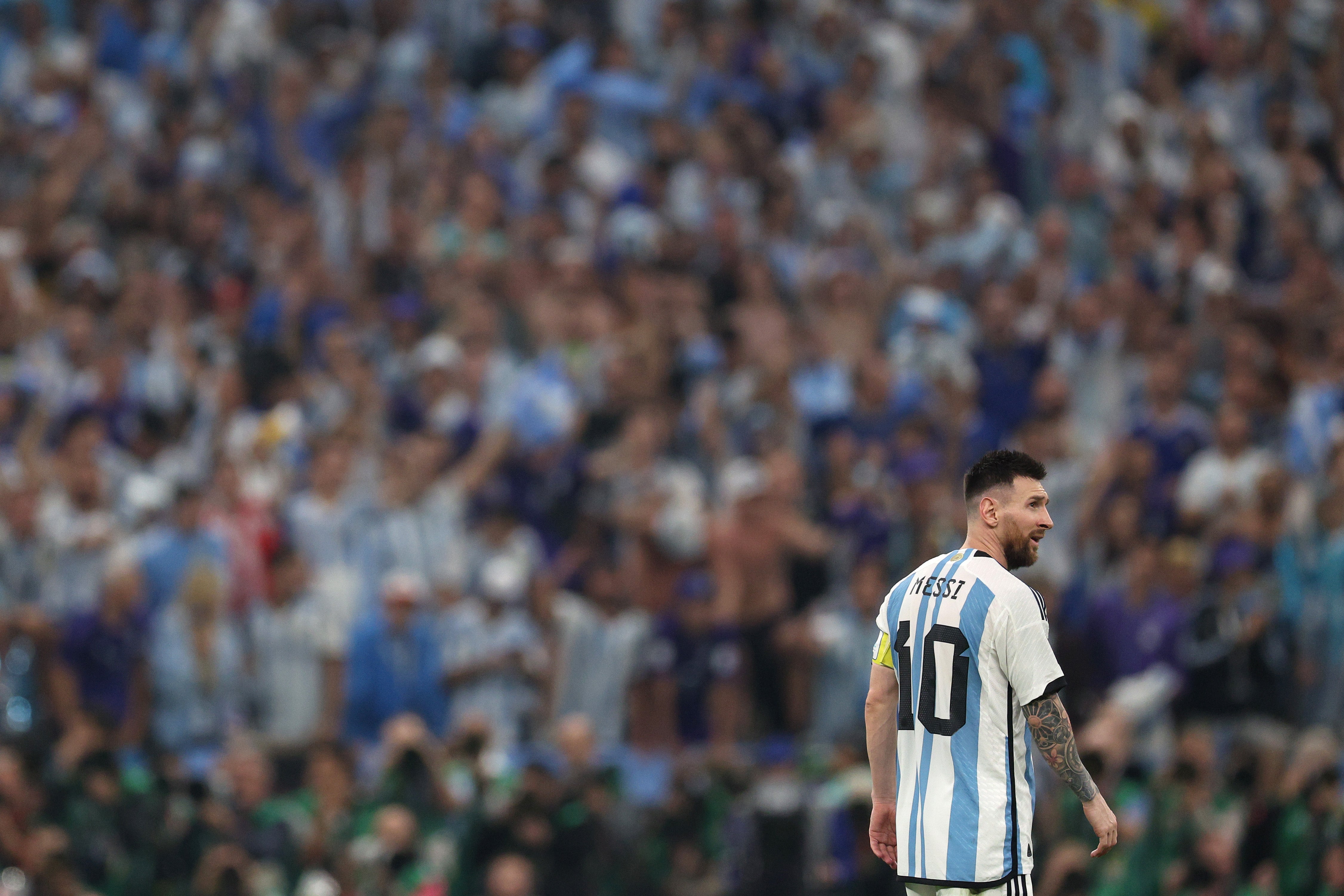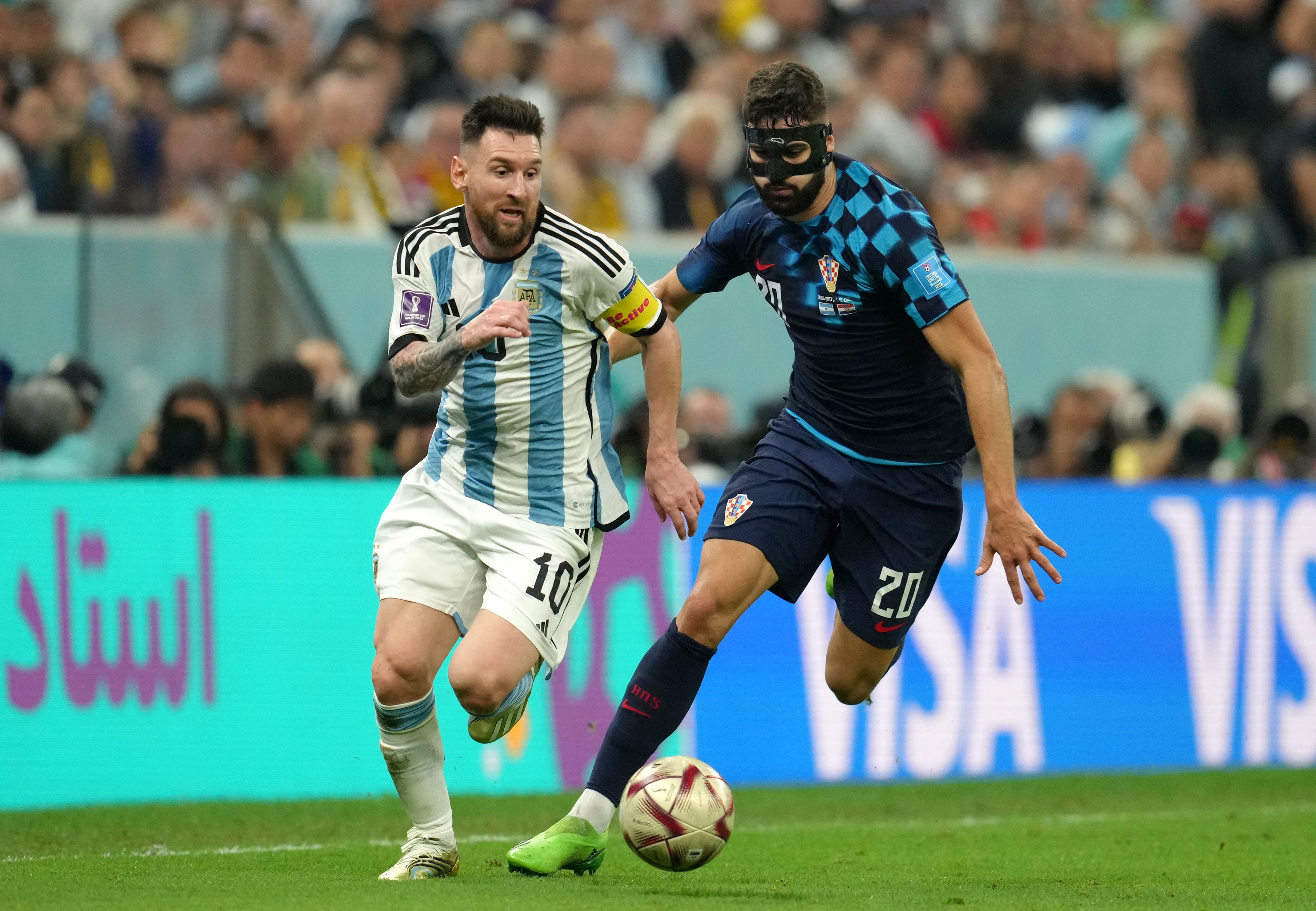Lionel Messi takes flight to deliver a piece of World Cup history
Thousands of fans came to see Lionel Messi in full flow and they got exactly that when he dribbled and spun to create Argentina’s third goal of the World Cup semi-final

Two hours before kick-off, fans milled up and down Lusail Boulevard in a hubbub of heart-pumping, stomach-gripping anticipation. It is a wide street full of palm trees and bright shops and generic restaurants, a themepark of a place, and this so-called ‘city of the future’ felt like a weird location for some football history. But here they waited, outside McDonald’s and Nando’s and Sainsbury’s, wondering what the night had in store.
This was where Argentina’s destiny would be decided; or rather Lionel Messi’s, for that was who they’d come to see. It was the only way to explain why, beyond Argentina’s core of travelling supporters, thousands of local fans were here wearing Argentina shirts and draped in Argentinian flags. Inside the giant illuminated stadium, a group of young Arabic men took their seats wearing traditional Keffiyeh headdress coloured in the famous blue and white stripes. Thousands of people had come not really to see a World Cup semi-final, nor even to see a football match, as such. They’d come to see a moment.
Messi has his own gravitational pull, one which extends from the streets of Rosario to the bland boulevards of Lusail and far beyond. At one minute to 10pm in Doha, a posse of local volunteers rolled up the giant centre-piece covering the middle portion of the pitch and lugged it up on to their shoulders. As they prepared to march away, suddenly their heads began to spin to the left, one after another like dominos. There was Messi, a few feet across the grass, walking to his mark for the start of the World Cup semi-final.
There is a different feeling watching Messi now to any other time in his career. There is an urgency, an angst. Every touch carries more weight than before. Every match could be his last. Here he attracted everything - defenders, fans, cameras - except the ball. The match lasted 100 minutes from the first whistle to the last, and in between Messi only had control of the ball for a total of barely 60 seconds. Two seconds here, five there, and each little spell sent a surge of energy pulsating through the stadium.
Yet even for the other 99 minutes, Messi was the most fascinating sight, drawing the eyes. Heads flitted between him and the action like a tennis match. A murmur rippled through the crowd not because Croatia had a potentially dangerous set-piece but because, 50 yards away on the halfway line, Messi was bent double, clutching his hamstring and grimacing. Perhaps tonight wouldn’t be one of those nights for magic after all.
But then it came. If there are times when this entire World Cup feels like Messi’s last attempt to end the comparisons with Cristiano Ronaldo once and for all, then this goal was a reminder of what separates him from other footballers. The speed of thought, the close control, the undressing of a high-calibre defender, and finally the capacity to serve others: Messi will be the only player in history who finds a way to score 800 goals and still look selfless.
He took off, shimmying in that instantly recognisable way before dribbling towards the box as Josko Gvardiol gave chase. His feet moved the ball but they also moved Gvardiol, provoking him into involuntary micro-reactions, twisting one of the world’s best young defenders into existential crisis. The young Messi would sometimes beat his man all over again just for fun; now it is necessary when his marker’s legs are 15 years younger.

Messi pirouetted around the back of Gvardiol and into the penalty area, where he knew a defender leaves his confidence at the door. As he scuttled along the byline he passed an Argentinian flag bearing the face of Diego Maradona. He took a half-glance up, enough to map out a pass with an invitation to be swept home first time, and Julian Alvarez obliged.
The Argentina fans sang and the noise resonated around the stadium. On the side the substitutes smiled and joined in, getting ready to stream on to the pitch at the final whistle. There is a sense of destiny about this team, and they all feel it. Argentina have played in five World Cup finals before: in Montevideo, Buenos Aires, Mexico City, Rome and Rio de Janeiro. On Sunday they will return to this glorified airport terminal in the desert, the place where Messi will try to cement his legacy.
Afterwards, Argentina danced and sang on the pitch. They formed a huddle and for a brief moment the players engulfed Messi, more and more joining the rabble until he disappeared. And for the first time all night, nobody could see him.
Join our commenting forum
Join thought-provoking conversations, follow other Independent readers and see their replies
Comments


Bookmark popover
Removed from bookmarks